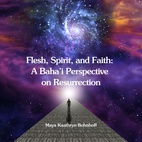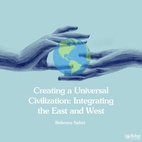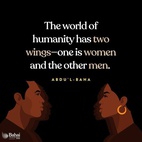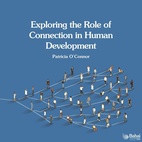The views expressed in our content reflect individual perspectives and do not represent the authoritative views of the Baha'i Faith.
Historically, at least until the advent of the Baha’i Faith, violence was sanctioned and practiced by many different religions – Judaism, Christianity, and Islam among them.
Today holy war and religious violence seem like the greatest possible contradictions in terms, but history confirms that wars have occurred among the followers of different past religions from time immemorial.
When religion comes up as a topic of discussion just about anywhere in modern society, this point will inevitably be raised as someone asks “But what about the violence in religion?” The question itself, often used to discredit spiritual belief itself, implies that all religions hypocritically preach love but practice the opposite.
However, the Baha’i teachings of global peace, unity, and cooperation have begun to alter that dynamic.
RELATED: Religious Wars: Who Bears Responsibility?
Baha’u’llah, the prophet and founder of the Baha’i Faith, commanded his followers to stop the vicious cycle of violence and retribution:
Beware lest ye shed the blood of anyone. Unsheathe the sword of your tongue from the scabbard of utterance, for therewith ye can conquer the citadels of men’s hearts. We have abolished the law to wage holy war against each other. God’s mercy hath, verily, encompassed all created things, if ye do but understand.
… O people! Spread not disorder in the land, and shed not the blood of any one …
Of course, no prophet ever counseled that violence was good. In past religions some allowed self-defense, and others said that they came to “bring a sword,” but none approved the idea of conducting offensive wars for the purpose of subjugating others.
However, that often changed after the passing of those original prophets, when subsequent religious leaders seeking power or position succumbed to political pressure or popular sentiment and approved the waging of war. The Crusades provide the most-cited example, but there have been many more.
Religiously approved violence presented a major stumbling block for Saint Augustine, who because of the violence sanctioned in the Hebrew Bible, struggled with accepting Christianity, which was built upon it. Augustine’s Confessions makes clear that he found the Biblical descriptions of Jewish violence, like the re-conquest of Canaan, quite troubling. That’s certainly true today, when we know much more about religious history and its wars and persecutions, and when we have a very different view of violence itself.
But violence did not start – or stop – with the advent of Christianity. Rather, as history shows, it grew. In the time after Christians began to take political power in the Western world, the Church regularly used violence and warfare to suppress unapproved thought and even forcibly convert others. When the New World was “discovered,” for example, much Christian missionary activity occurred within the context of violent expansion and even genocide.
Despite that proven history, in contemporary Western cultures the Pew Research poll has shown that more than 50 per cent of those who identify as Christians believe Islam “encourages violence more than other faiths.”
Let’s examine that premise. In historical terms, Islam certainly did have a history of violence, in three different categories: against the Meccans who opposed Islam, against the Jews who sided with the Meccans, and against those who resisted Islam outside of Arabia. To get a better sense of why and how it happened, let’s look at each one.
Violence against the Meccans
In the Qur’an Muhammad was given the charge to invite people to his new religion, a charge he carried out with perfect devotion. Given the times, his message was powerful and revolutionary, and violent opposition from interests vested in the status quo came inevitably and terribly. For a long time – 10 years – Muhammad patiently withstood that oppression in Mecca, until the leaders of the dominant clan (the Quraysh) made plans to kill him and his followers. At this point he sent one group of followers to safety in Ethiopia and fled with others to Medina (then called Yathrib).
Muhammad had met six (some accounts say seven) men from Yathrib two years before his flight to Medina when they visited Mecca and became Muslims. The next year, 12 men from Yathrib visited (five from the previous year and seven new ones) and these new visitors also became Muslim. Muhammad then dispatched a teacher to Yathrib. The following year, 75 Muslims from Yathrib, including leaders of the major tribes, visited him and asked him to come to Yathrib, teach his religion, and serve as the official adjudicator of all disputes in their badly divided community. There had been civil war between the two major tribes just a few years before, and they needed a wise, respected, neutral outsider to settle ongoing and new arguments.
When Muhammad arrived in Yathrib, which we now know as Medina, he was met by over 500 Muslims, the number growing rapidly. Muhammad was no longer just a prophet and preacher; he was now also a governor and protector of a community receptive to his teachings.
When the leaders of Mecca attempted to kill Muhammad and his followers, this not only precipitated Muhammad’s flight to Medina and inaugurated the Islamic calendar, this also changed the character of Islam from small, forbearing, oppressed, and hemmed in to large, protective, evangelical, and expanding.
Medina is north of Mecca, just off a major trade route that connects Mecca with the great Fertile Crescent to the north, so contact and conflict with the wealthy Quraysh merchants to the south of Medina was inevitable. Further, Meccan leaders placed a bounty on Muhammad’s head. As Islam grew in Medina, the whole city, who swore allegiance to Muhammad, became a possible target of attack.
For hundreds, if not thousands of years before Muhammad, inter-tribal Bedouin warfare among the Arabs typically consisted of swift murderous raids on unsuspecting enemies, followed by confiscation of their goods and enslavement of survivors. The reasons for warfare varied from retaliation for past actions or insults, to suspected treachery, greed, or survival. But whatever the reason, warfare was deeply imbedded in Arab (especially Bedouin) life at the time of Muhammad. To guard against such attacks, villages had to keep constant guard and had to know where their enemies were.
As the new leader of a sizeable but spread-out community in Medina that had recently acquired new and powerful enemies (the Meccans), Muhammad understood that it was essential to know the whereabouts of Meccans who, with increasing frequency, were active in the areas around Medina. Small skirmishes between travelling Meccans and Medinans began about a year after Muhammad moved to Medina. These eventually led to the first full-scale battle at a place call Badr in 623 CE, then next at Uhud in 625, then at the siege of Medina (the Battle of the Trench a.k.a. the Battle of the Confederates) in 627, and finally with the capture of Mecca in 630.
RELATED: The Impact of Islam on World Civilization
There’s something of a David-vs-Goliath character to these battles. In each case the Muslims were vastly outnumbered. At Badr, 300 Muslims went up against 1,000 Meccans. At Uhud, 1,000 Muslims went up against 10,000 Meccans, and at the Battle of the Trench 10,000 Meccan warriors hemmed in 3,000 Medinite warriors. Nevertheless, in the end, it was Muhammad’s forces who were victorious, and Mecca fell to Muhammad with relatively little actual bloodshed.
During these battles it is clear that Muhammad was often a reluctant warrior. Even at Badr, for example, the Qur’an (8:38-39) records Muhammad’s effort to prevent bloodshed before it started:
Tell those who are bent on denying the truth that if they desist, all that is past shall be forgiven them; but if they revert [to their wrongdoing], let them remember what happened to the like of them in times gone by. And fight against them until there is no more oppression and all worship is devoted to God alone. And if they desist – behold, God sees all that they do.
The appeal is stated even more plainly at Qur’an 8:61 “But if they incline to peace, incline thou to it as well, and place thy trust in God: verily, He alone is all-hearing, all-knowing!”
Muhammad’s enemies would have nothing of it.
These battles, the Baha’i teachings clearly point out, were always defensive on Muhammad’s part. In Some Answered Questions, Abdu’l-Baha explained:
… Muhammad’s military expeditions were always defensive in nature. The clear proof is this: for thirteen years both He and His companions endured in Mecca the most intense persecutions and were the constant target of the darts of hatred. Some of his companions were killed and their possessions pillaged; others forsook their native country and fled to foreign lands. Muhammad Himself was subjected to the severest persecutions and was obliged to flee Mecca in the middle of the night and emigrate to Medina. Yet even then His enemies did not relent but pursued the Muslims all the way to Medina and Abyssinia.
… And yet, far from desisting, these people joined forces, raised an army, and attacked with the aim of exterminating every man, woman, and child among His followers. It was under such circumstances and against such people that Muhammad was forced to take up arms.
Understanding these circumstances can help those of us who grew up in Western Christian cultures begin to appreciate the facts of Islamic history – and better comprehend how all the prophets of God protected their flocks against the violence of others.

















Comments
Sign in or create an account
Continue with Googleor